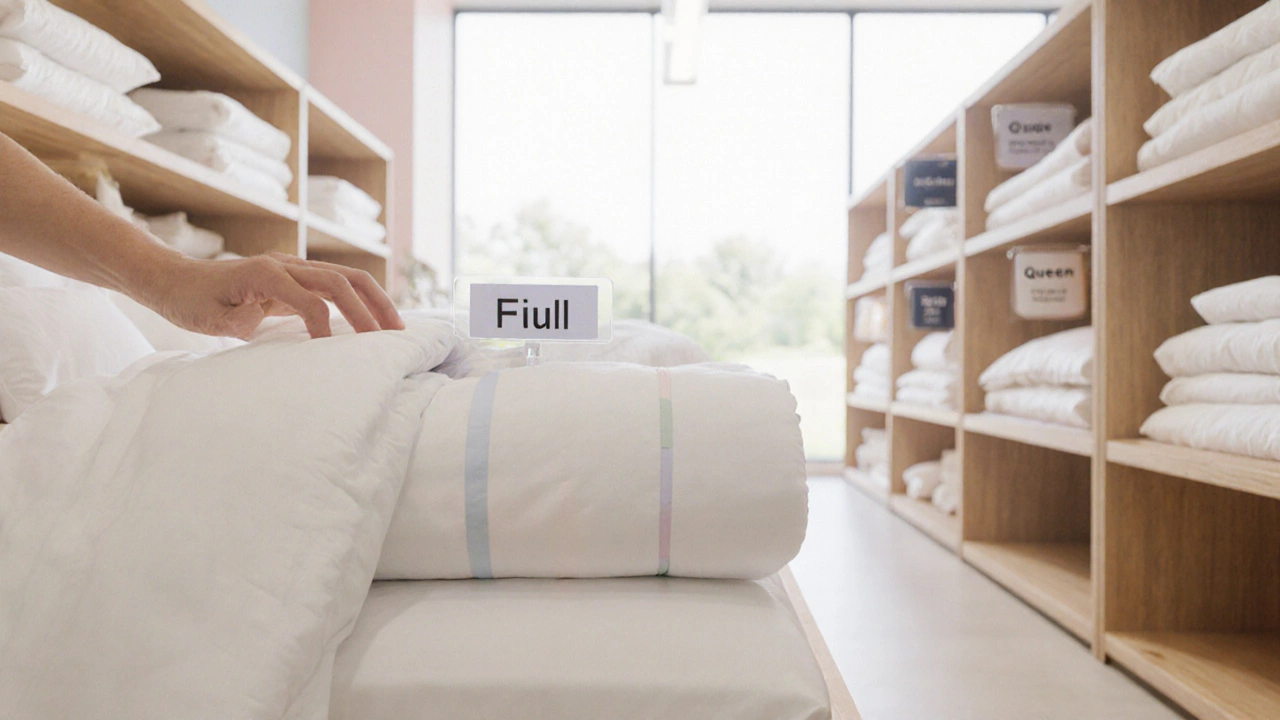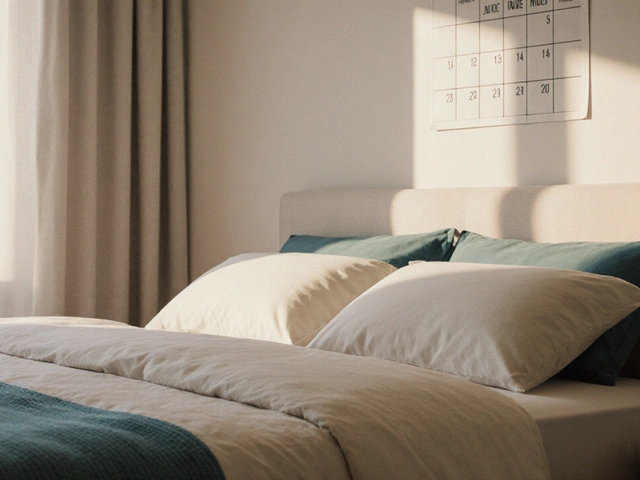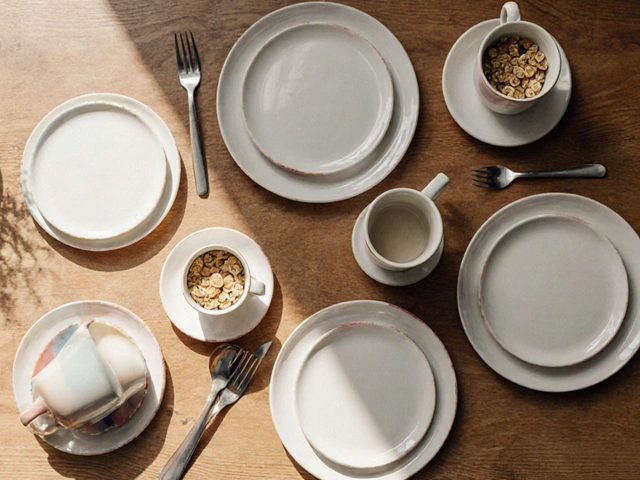Full-Size Bedding Set Calculator
Full-Size Bedding Specifications
A full-size mattress measures 54 inches wide by 75 inches long. Here are the standard bedding components:
Compare Bed Sizes
| Size | Mattress (W × L) | Fitted Sheet | Flat Sheet | Comforter |
|---|---|---|---|---|
| Twin | 38 × 75 in | 38–40 × 75–78 in | 66 × 96 in | 66 × 86 in |
| Full (Double) | 54 × 75 in | 54–56 × 75–78 in | 81 × 96 in | 68–70 × 86–90 in |
| Queen | 60 × 80 in | 60–62 × 80–84 in | 90 × 102 in | 86–92 × 92–100 in |
| King | 76 × 80 in | 76–78 × 80–84 in | 108 × 102 in | 102–110 × 92–100 in |
Check Your Bedding Fit
Enter your mattress dimensions to verify if your bedding components will fit properly:
Ever walked into a store, saw a "full" label on a set of sheets, and wondered what the heck that meant? You’re not alone. The term pops up on tags, online listings, and even in home‑decor magazines, yet many people can’t pin down exactly what a full size bedding set includes or why it matters. This guide clears the fog: we define the size, break down every piece you’ll find in a typical set, compare it to other bed sizes, and give you practical tips for picking the right fabrics, fits, and care routines.
What Is a Full‑Size Bed?
Full‑size bed is a mattress that measures 54inches wide by 75inches long (about 137cm×191cm). In North America it’s also called a “double” because it’s roughly twice the width of a twin but still shorter than a queen. The extra width gives couples a bit more room than a twin, while staying compact enough for smaller bedrooms or guest rooms. Knowing the mattress dimensions is the first step to matching the right sheets, blankets, and accessories.
Key Components of a Full‑Size Bedding Set
A complete bedding set is more than just a fitted sheet. Most manufacturers bundle together the essentials you need to make the bed look polished and feel comfortable. Here’s what you’ll typically find:
- Fitted sheet is a sheet with elastic corners that hugs the mattress. For a full‑size mattress the standard fitted sheet size is 54×75inches, often with a pocket depth of 12‑16inches to accommodate thicker toppers.
- Flat sheet lies on top of the fitted sheet, providing an extra layer you can tuck in. The flat sheet typically measures 81×96inches for a full bed.
- Comforter (or duvet) adds warmth. A full‑size comforter usually comes in 68×86inches, though you’ll see 70×90inches for a slightly oversized drape.
- Pillowcase protects the pillow and adds a decorative touch. Standard pillowcases are 20×30inches, but you’ll also find king‑size (20×36inches) for extra length.
- Duvet cover encases the comforter, keeping it clean and offering a style update without buying a new comforter.
- Mattress itself is the foundation. The most common full‑size mattress thickness ranges from 9 to 14inches, influencing sheet pocket depth and comforter fit.
Some sets also throw in decorative shams, a quilt, or a throw blanket, but the six items above constitute the core of a full‑size bedding set.
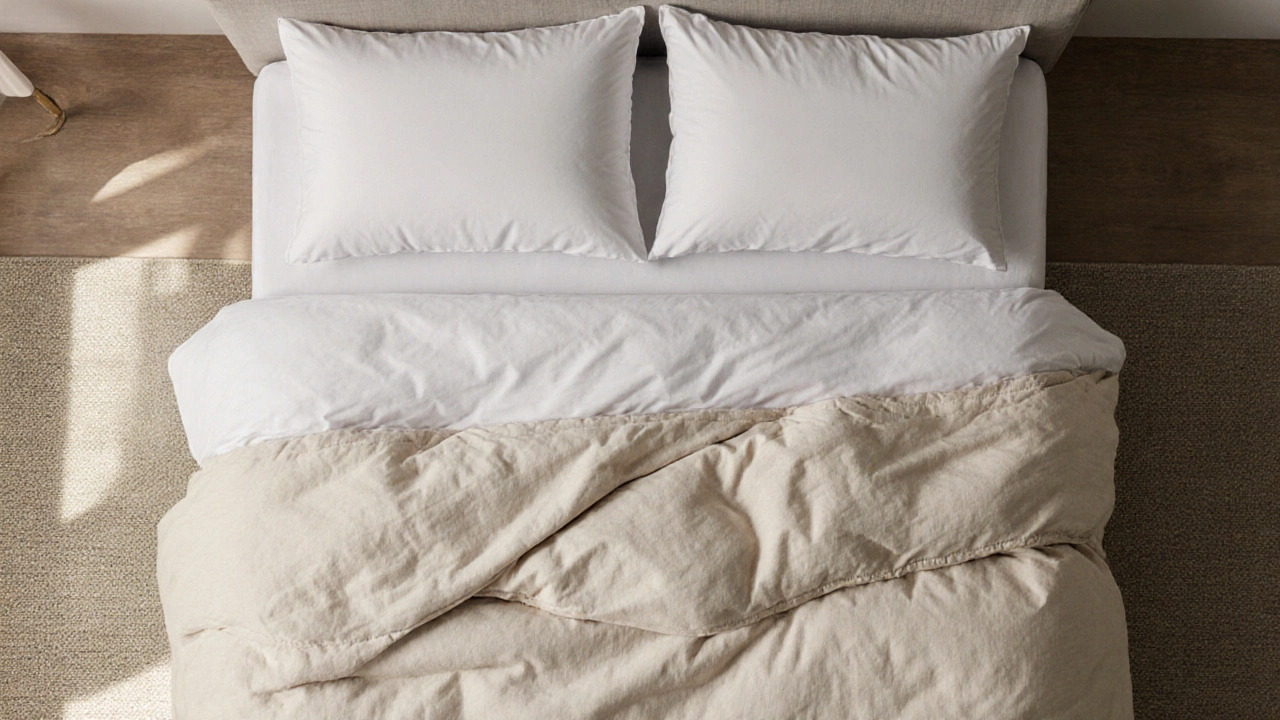
Standard Dimensions You Need to Know
Understanding the exact measurements helps you avoid mismatched pieces. Below is a quick reference for the most common bed sizes in the United States, along with the typical dimensions of their associated bedding components.
| Size | Mattress (W×L) | Fitted Sheet | Flat Sheet | Comforter |
|---|---|---|---|---|
| Twin | 38×75in | 38‑40×75‑78in | 66×96in | 66×86in |
| Full (Double) | 54×75in | 54‑56×75‑78in | 81×96in | 68‑70×86‑90in |
| Queen | 60×80in | 60‑62×80‑84in | 90×102in | 86‑92×92‑100in |
| King | 76×80in | 76‑78×80‑84in | 108×102in | 102‑110×92‑100in |
Notice how the comforter is always a few inches larger than the mattress. That extra fabric lets the comforter drape nicely over the sides without looking too tight.
How to Choose the Right Fabrics and Thread Count
Fabric choice impacts comfort, durability, and maintenance. Here’s a quick cheat sheet of the most common materials:
- Cotton - Breathable, soft, and easy to wash. Egyptian or Pima cotton has longer fibers for a smoother feel.
- Linen - Ideal for hot climates; it gets softer with each wash but wrinkles easily.
- Microfiber - Synthetic, ultra‑soft, and resistant to stains, but can feel less breathable.
- Bamboo viscose - Naturally antimicrobial and eco‑friendly, with a silky hand.
When it comes to thread count, more isn’t always better. A count between 200‑400 is optimal for most cotton sheets. Anything above 600 often means the yarn is too thin, which can reduce durability. For linen, thread count isn’t a standard metric; instead, look for the weight (e.g., 180gsm is lightweight, 250gsm is medium).
Full‑Size vs. Other Bed Sizes: When to Upgrade
If you’re buying a new mattress or setting up a guest room, you’ll weigh space against comfort. Here are some practical scenarios:
- Couples with limited bedroom space - A full‑size bed can fit in a room as small as 10×10feet while still offering enough width for two average‑size sleepers.
- Growing families - If you anticipate a child moving into the room, a queen‑size mattress might be a smarter long‑term investment.
- Guest rooms - Full‑size is a safe middle ground; it feels more upscale than a twin and doesn’t dominate the room.
- Limited budget - Full‑size sheets and comforters are generally cheaper than queen‑size equivalents, saving you a few dollars without sacrificing too much space.
Remember, the bed frame and any headboard/footboard also add to the footprint, so measure twice before committing.
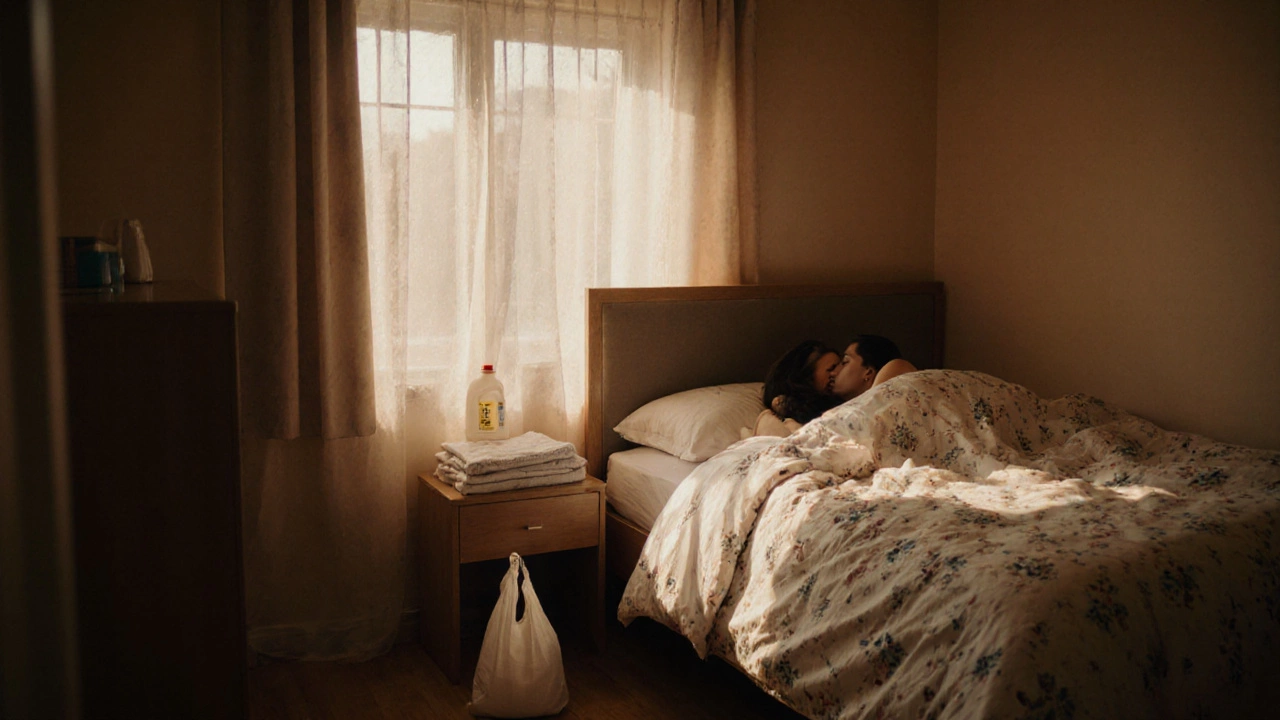
Care and Maintenance Tips
Keeping your full‑size bedding fresh extends its life and retains comfort. Follow these simple steps:
- Wash in cold water - Hot water can shrink cotton fibers and fade colors.
- Use a gentle cycle - This reduces stress on weaves, especially for linen and bamboo.
- Skip fabric softeners - They can coat fibers and diminish breathability.
- Dry low or line‑dry - Over‑drying leads to brittleness; tumble on low heat for cotton, air‑dry for linen.
- Store with a breathable bag - Plastic seals trap moisture, inviting mildew.
If you notice pilling on a microfiber comforter, a short tumble with a dryer sheet can smooth it out.
Common Mistakes to Avoid
Even seasoned shoppers slip up. Here are pitfalls you can dodge:
- Buying the wrong pocket depth - If your mattress topper is 14inches thick, you’ll need a fitted sheet labeled “deep pocket” (usually 15‑18inches).
- Ignoring shrinkage - Natural fibers like cotton can shrink 2‑3% after the first wash. Buying a slightly larger size can compensate.
- Mixing patterns that clash - A bold printed comforter paired with a patterned flat sheet can feel chaotic. Stick to one patterned piece and keep the rest solid.
- Skipping the duvet insert - A duvet cover alone won’t provide warmth; make sure you have an appropriately sized insert.
Frequently Asked Questions
What is the difference between a full bed and a double bed?
In the United States the terms are interchangeable. Both refer to a 54×75inch mattress, offering extra width over a twin but not as much as a queen.
Do I need a separate pillow shams for a full‑size bed?
Pillow shams are optional and sized for the pillow, not the bed. Standard 20×30‑inch pillows fit most full‑size duvet sets, but if you use king‑size pillows, choose shams that match the larger dimensions.
Can I use queen‑size sheets on a full‑size mattress?
It’s not recommended. A queen fitted sheet will be too wide, causing excess fabric to bunch up. The flat sheet will be fine, but the comforter may look oversized.
What thread count should I aim for on a full‑size sheet set?
A count between 200 and 400 offers a good balance of softness and durability for cotton. Anything higher often comes from thinner yarns that wear out faster.
How often should I replace my full‑size comforter?
Most comforters last 5‑7 years if you wash them according to the label and use a duvet cover to protect them from spills.

